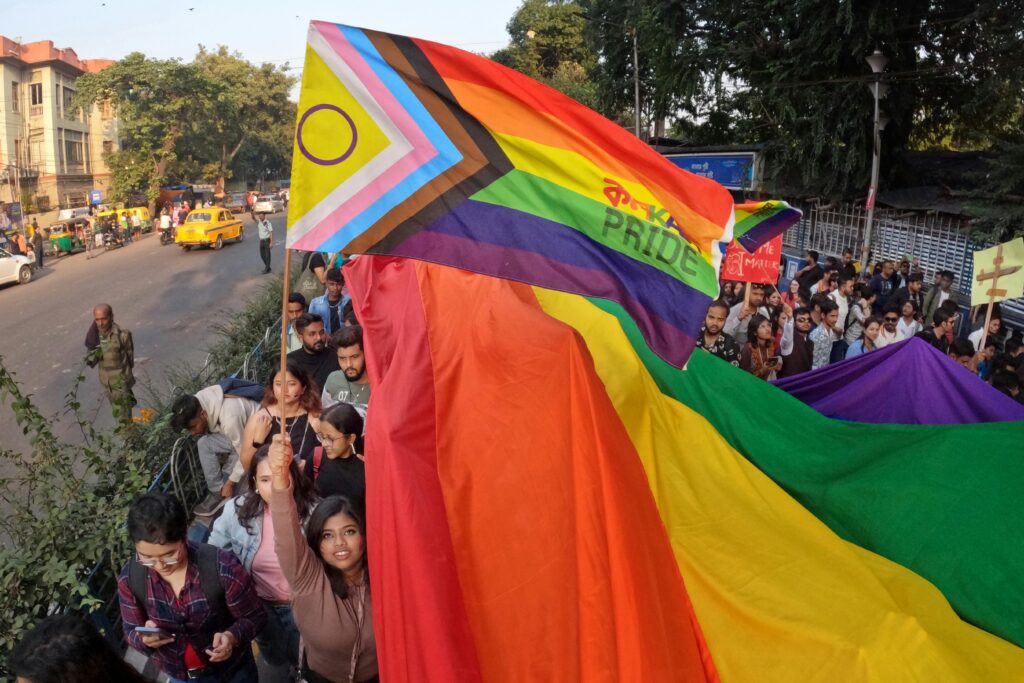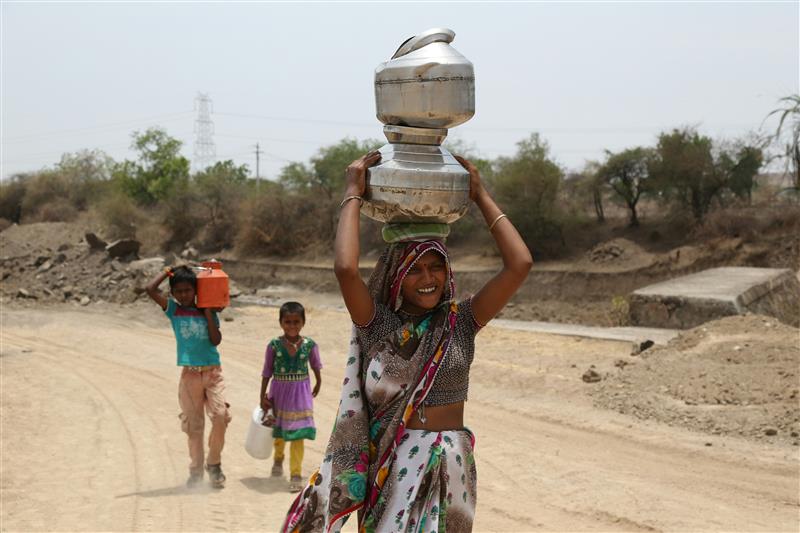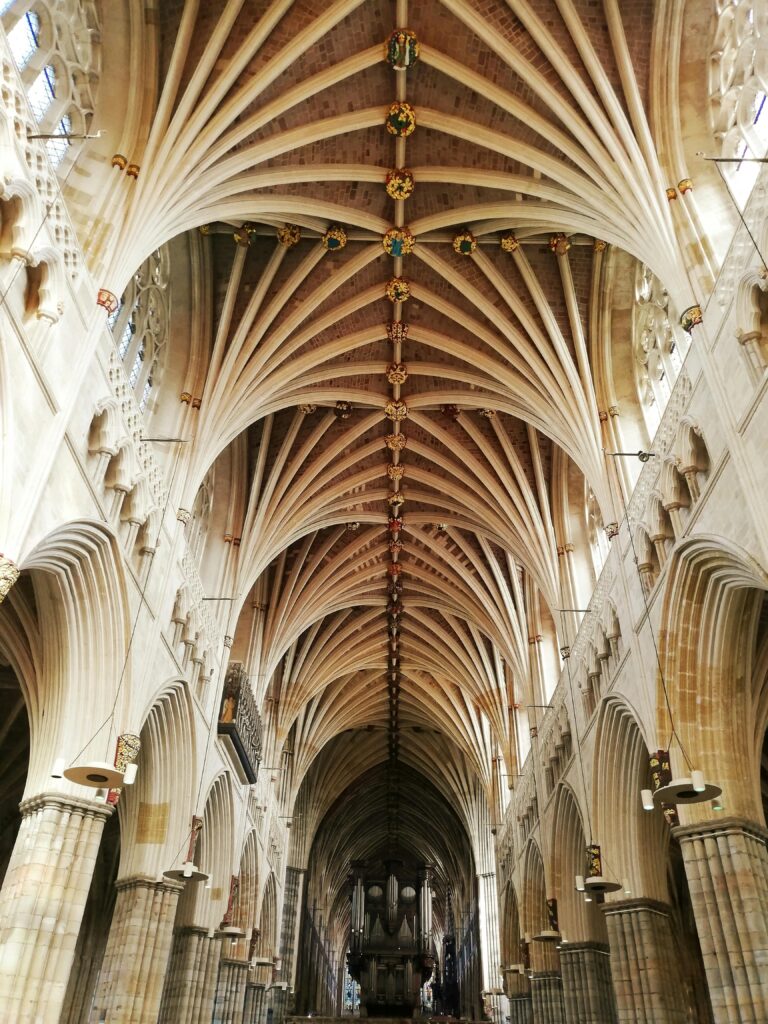It has the highest mountain range in the world to its north — the Himalayas; to its west, the Thar desert, one of the hottest places on Earth, which occupies almost five percent of the landmass. Thick jungles and dense rainforest to its east covering almost twenty-one percent of its landmass and a seven-thousand kilometre long coastal line; with one-thousand plus inhabited islands within its waters. Not forgetting its billion and a half population, of which only thirty-five percent are squeezed into some of the world’s largest and most polluted cities. A point worth punctuating is that this ginormous population is one of the youngest in the world. This is India.
Nestled amongst such massive numbers is a rich biodiversity which in some significant way still thrives. Seven percent of the world’s plants and fauna; and ten percent of the world’s species, with some of the rarest mammals on Earth only to be found here.


India is both rich and poor. Some of her people are leading globally in science and tech, whilst others are illiterate. She is superbly well governed in parts, and crippled by corruption. She has one the most diverse societies on Earth living peacefully together over centuries, and yet today she is mired with ethnic and religious tensions of every kind. Her people are incredibly progressive and forward looking, while also wedged by out-dated customs of caste, tribe, and clan. She is one of the safest places on Earth, and yet, it can be unsafe for women to travel in some of its urban centres. Majority of her people are worshippers of nature and deeply connected to the land, while being one of the most polluted places on Earth. India has the world’s oldest unbroken civilisation, and it’s a young nation-state, still finding its feet when it comes to democracy.
India — for every statistic, there is a counter statistic. For every generalisation, there is a counter one. India is VUCA with the biggest capital letters you can apply; it is Volatile, Uncertain, Complex (beyond imagination) and Ambiguous. In the United Kingdom, and I would argue in the West more generally, we struggle to make sense of India.
India is in her ascent, no mistaking that. But that terminology will no longer do. India is comparable in so many ways to the West, and in some sense even surpasses us, yet we cannot be sure where she will plateau, if at all. Through what lens can we gaze at her to appreciate her richness, diversity, layered and complicated history, religious tapestry, and her aspirations and fears?
We need a new framework to think about India.
In short, India is too big to fail. India is too significant to be ignored. She is too present in our lives to think her challenges do not really affect us. A billion and half human beings, with one of the world’s most biodiverse landscape means that we cannot remain uninterested, disengaged, passive and neutral. We must engage equipped with a new lens: a new understanding coupled with a new intent.
India needs us, as much as we need her.
For India to reach the dizzying economic and political heights some people are forecasting, she will need the West, especially in the face of an ever autocratic, aggressive, and insecure CCP (Chinese Communist Party). India will need the West to buy her goods, use her services, invest in her start-ups, exchange technology, share intelligence, cooperate against international criminals, and rogue actors, protect and enforce international law, and to co-build a new international order. But, above all else, India will need the West, and vice versa, in building a Sustainable World — a truly circular economy, where technology enhances human flourishing, and consumption points towards the higher pleasures of humankind. Only when a country has sufficient capital base (and India is largely capital starved) and political stability can equality and liberty truly take root. I would argue that the West harbours the most tolerant and free democracies in the world, with a sizeable capital base to match, and from this India can take.
At present, India has a dark cloud over her. There appears to be a rise in ethnic and religious conflict caused by a ethno-centric nationalist government at the helm led by its charismatic and enigmatic Prime minister Narendra Modi. Modi is portrayed as a Hindu zealot by many quarters in the West. Often these characterisations need contextualisation before critique. There is plenty of the latter and very little of the former. This is a problem because it only pushes India away from us, and leaves her diaspora alienated and insecure. Only when we really understand India, can we begin to challenge and be heard.
Somewhat utopian? Sure. But we would be fools if we thought we had a choice in the matter. For the world to remain prosperous, we will, and we must, build a far stronger alliance with India in every sphere.
An alliance that is built on three maxims:
- Maximise mutual benefit for all.
- Minimise harm and externalities for all.
- Act from a place of deep and time-tested trust.
The third point is a tough ask, and one if taken on will take a decade or more to get right.
To start with, we first need to understand.
India is one country, one nation, but one that exists across several centuries.
There is a twenty-first century India, where around two-hundred million Indians live. This is the India that aspires to go to the moon, and complete Mission Mars; aspires to innovate, digitise, and be a world leader in transformative healthcare. This is an India that understands the world and wants to be a progressive force in the world. It is truly liberal, democratic, and cultured. Their children travel around the world and are the highest achievers at every level. The worlds cadre of CEOs is also from this group who are all equipped with PhDs and MBAs from some the best institutions in the world.
Then there is the India in the twentieth century, around five-hundred million of them. These are the Indians that have just escaped poverty a generation or two ago. They are at the beginning phases of receiving a formal education and building a capital base. They are only just beginning to be exposed to the world, and their children have ambitions to study abroad. These are the Indians that are still rooted in tradition and custom, are religious but loosely; they have caste consciousness and practice endogamy but decreasing rapidly; and are the backbone of India’s population dividend. These are people who materially and culturally are still largely in a phase of discovery, and a newfound confidence to engage with the world. These are the Indians who have one foot in each century.
Then there is the India the western media loves to focus on: the nineteenth century India. This is an India that is illiterate in large pockets; lacks even the basic human dignity; a haphazard or substandard education; poor or little access to decent healthcare; and one trapped in debt cycles, arcane customs and religious practices; steeped in tribalism and clan rivalry; with little access to justice, and so rely on clan and caste identity for their security; who are prone to short and somewhat brutal lives. This India lives largely in rural under-developed India, but also increasingly in the sprawling slums of India.
Three centuries are playing out in one geography; under one governance structure: one democracy!
All are equally India. All have their histories, charms, and insights. Simultaneously they also have their risks, idiosyncrasies, and hang-ups. Yet, in our lexicon, and therefore in our cognition there is only one India. In urban centres these three centuries are often layered on top of each other — literally!


When we think about India, or when we even cross the road in India, it may be useful to acknowledge which India we are looking at, thinking about, or have just inadvertently walked into. Pending on which India it is, the rules, the governance structures, the rule of law, customs, and traditions, and even the very nature of the people changes. Indians, all billion and a half of them are navigating through these centuries all of the time, twenty-four-seven, (mostly) unconsciously. This, I would hypothesise makes Indians agile, flexible, adaptable, and therefore entrepreneurial. What was it that Darwin told us? It is the survival of the most adaptable! If we are to navigate India, we too are going to have to consciously learn how to navigate three centuries simultaneously, and in the process become equally agile, flexible, adaptable and ultimately even more entrepreneurial.
Imagine for a moment, we are in one of South Mumbai’s swanky bars, where prices are comparable to anything in the City of London. We are surrounded by suits, or people in fine silks and designer brands. People ooze a confidence and a charm. Conversations revolve around finance, deals, global politics, or the latest theatre production. After a few expensive drinks in complete luxury and safety, we walk out of the door to catch a taxi that is standing across the road. We leave the 21st century. Upon leaving the bar, we would enter a world of scarcity from a world of abundance. The air is hot and polluted. Even to cross the road, new rules must be applied, rules that would have been seen as uncouth at the bar. Each road in India caters for all three centuries. Yet, as is simply the case, the lowest denominator dominates. Everyone must adjust to the folks who live in the 19th century; it is nigh impossible to expect them to adjust to the 21st century dwellers. Your dress inside the bar would have not drawn a second glance, but out here, you stand out. Envious eyes from the 20th century turn to stare, whereas submissive eyes from the 19th century simply look down at the broken pavement as they walk by. As you get into the 20th century taxi, the driver is certainly from the 19th century who may have just entered the early part of the 20th century himself. To talk to him requires a different language, tone, and etiquette — he would not respond well, or maybe if you’re lucky, indifferently to your tone and style at the bar. As you enter your 21st century hotel, the staff at the reception live in the 20th century but are striving to reach where you are and so emulation is rife, and often crass.
When we begin to cognise our experiences of India, her people and civilisation, through the framework of “three centuries”, we will begin to make better sense of what is happening. What’s more is that it will evoke a sense of compassion in our judgement and analysis.
India houses one-sixth of humanity across three centuries all co-existing together. Her challenge, and ours too, is how to bring so many people into the 21st century in a manner that is dignified and wholesome for every man, woman, and child, regardless of their creed or kin.



